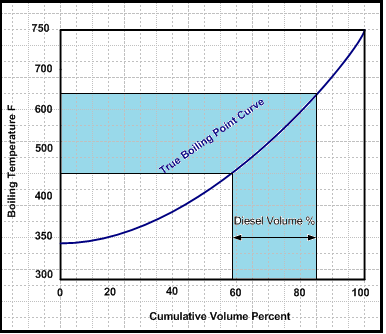What is crude oil assay analysis?
The crude oil assay is the collection of the results of physical tests that are performed to determine the key properties (boiling point, density, viscosity, heteroatom contents, acid number, etc.) of crude oil and its fractions. It is the procedure based on laboratory and pilot plant testing for determining the general distillation and quality characteristics of crude oil. Crude oil assay is important for determining the value and processability of crude oil. This is the preliminary step before processing the crude oil in the refinery. . In order to utilize the crude oil assay data, it is necessary to understand the results and significance of some of the laboratory tests. For further details about crude oil types, composition and characteristics, view my previous blogs;
The crude oil assay produces important data on the compatibility of crude oil for a specific oil refinery and approximation of the petroleum products yields and quality. The results of crude oil assay provide detailed analysis for refiners, oil traders, producers, and designers, enabling them to predict the true value of crude oil for a specific facility. Crude oil assay data helps in the following ways;
- Determine the compatibility of a crude oil feedstock for a particular petroleum refinery.
- Operating conditions of a refinery are adjusted according to the crude oil assay data to control yield, quality, plant operation, environmental and other problems.
- Gives the various components of crude oil along with the expected percentage of recovered products for each specific type of crude.
- Information obtained from the petroleum assay is used for detailed refinery engineering and client marketing purposes.
- The price of crude oil is determined according to the crude oil quality determined by assay, e.g., light crudes, sweet crudes will have different price structures based on the given crude assay.
- The crude assay will determine the yields of various petroleum products and consequently, the refinery configuration.
Types of crude oil Assay
- Inspection Assay involves the determination of several key bulk properties such as API gravity, sulfur content, distillation range. These are routinely performed on all crude oils received at the refinery.
- Comprehensive Assay is more complex, time-consuming, costly, and is usually performed only when the new field comes into operation or when the inspection assay indicates significant changes in composition. Except for these circumferences, the comprehensive assay for a specific crude oil may not be updated for several years.
The crude assay database is a complete, definitive, and detailed analysis of crude oil. A complete crude assay contains some of the following analysis data:
- Crude oil salt and sediments.
- Specific gravity, viscosity, sulfur, light-end carbons, Nitrogen, and the pour point.
- A true boiling point curve (TBP curve) and a mid-volume plot of gravity.
- Light-end carbons compositions and analysis up to C8 or C9.
- Properties of petroleum fractions are present in crude oil (naphtha, kerosene, light diesel, heavy diesel, and residue). These characteristics include volume percent yield, gravity, sulfur, nitrogen viscosity, octane number, diesel index, flash point, fire point, freeze point, smoke point, and pour point, etc.
- Metals contaminants (Nickel, Cobalt, Calcium, Magnesium, etc.) are present in crude oil.
Details of some of the tests performed during crude oil assay are described below.
1. Specific Gravity and API Gravity
The specific gravity of crude oil depicts the heaviness and general behaviour of crude oil. Specific gravity or API gravity both tends to show the classification of crude oil. The API Gravity can range from 8.5 for extra heavy to 44 for light very light crude.

2. Sulfur Content
Sulfur content is expressed as the weight percent of sulfur in oil and typically varies in the range from 0.1 to 5.0%wt. Crude oil can be referred to as Sour or Sweet, based upon the sulfur content. Low Sulfur crudes are high in price and better in quality.

3. Viscosity
It is the resistance to flow or indication of the pumping ability of crude oil. More viscous oils require great energy and power to pump, and greater pressure drop to flow in the pipes. Viscosity measurement is expressed in terms of kinematic viscosity in Centi Stocks (cSt) and can also be expressed in Saybolt seconds.

4. True Boiling Point Distillation Curve
The crude oil composition is estimated by a true boiling point (TBP) curve. The boiling point range of crude oil gives an approximation of quantities of various petroleum products. The method uses a batch distillation operation, using a large number of stages, usually greater than 60, and high reflux ratio (greater than 5). The temperature at any point on the temperature and volumetric yield curve depict the true boiling point of the hydrocarbon material present at the given volume percent point distilled. TBP distillation curves are normally performed only for e crude and not for petroleum products.

5. Simulated Distillation by Gas Chromatography
SDGC is another technique utilized to measure the boiling point distribution of crude oil. This is done by injecting the sample of crude oil into a gas chromatograph that separates the hydrocarbons according to the boiling point order. The results of this test can also be compared with the true boiling point test. The boiling point distribution of light and heavy petroleum cuts can also be performed by gas chromatography.
6. Pour Point
The pour point is defined as the lowest temperature at which the sample of crude oil will flow. It indicates how easy or difficult is to pump the oil, especially in cold weather. It also indicates the aromaticity or the paraffinity of the crude oil or the fraction. A lower pour point means that the paraffin content is low.
7. Water, Salt, and Sediment
The crude oil carries small amounts of water, mineral salts, and sediments. Most of the salts are dissolved in water, and the remaining are present in the form of fine crystals. The most common salts present in crude oil are chlorides of magnesium, calcium, and sodium. The presence of salts causes problems in oil refining operations, such as corrosion, erosion, plugging of equipment, and catalyst deactivation. Sediments in crude oil are solid materials comprised of sand, mud, rock, minerals, etc that are not soluble in hydrocarbon or water.
8. Molecular Weight
Most crude oils and petroleum fractions have average molecular weights from 100 to 500. There are several techniques for measuring molecular weight but the most used method is that based on freezing point depression.
9. Total Acid Number
Another property of crude oil is the TAN, which describes the number of acids present in the crude oil. Crude oils having high acid numbers have a high potential to cause corrosion problems in oil refineries, especially in crude and vacuum distillation units. Crude oil typically has a total acid number (TAN value) value on the order of 0.05–6.0 mg KOH/g of the sample.
10. Metals Content
The metal content of crude oils can vary from a few parts per million to more than 1000 ppm and, in spite of their relatively low concentrations, are of considerable importance and can have damaging effects on the downstream catalytic processes. Amounts of trace elements in crude oil, such as vanadium, nickel, lead, phosphorus, arsenic, and other metals are measured.
For further information, discussion and queries please comment in the box below or contact at admin@ or follow us on Facebook & LinkedIn.
Certified Functional Safety Professional (FSP, TÜV SÜD), Certified HAZOP & PHA Leader, LOPA Practitioner, and Specialist in SIL Verification & Functional Safety Lifecycle, with 18 years of professional experience in Plant Operations and Process Safety across Petroleum Refining and Fertilizer Complexes.
- Nasir Hussainhttps://thepetrosolutions.com/author/admin/
- Nasir Hussainhttps://thepetrosolutions.com/author/admin/
- Nasir Hussainhttps://thepetrosolutions.com/author/admin/
- Nasir Hussainhttps://thepetrosolutions.com/author/admin/






